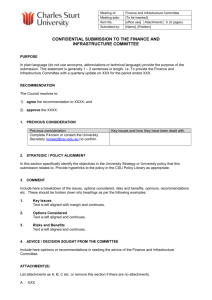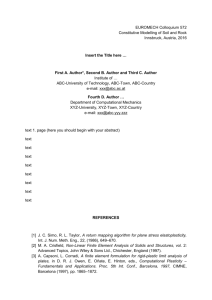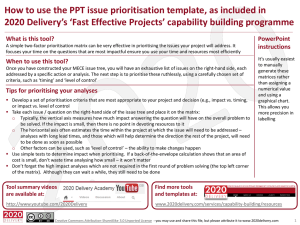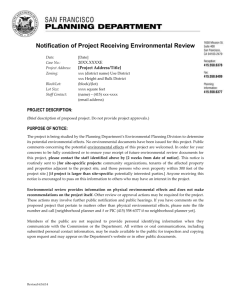Occupational Therapy Report: Child's Fine Motor Skills
advertisement
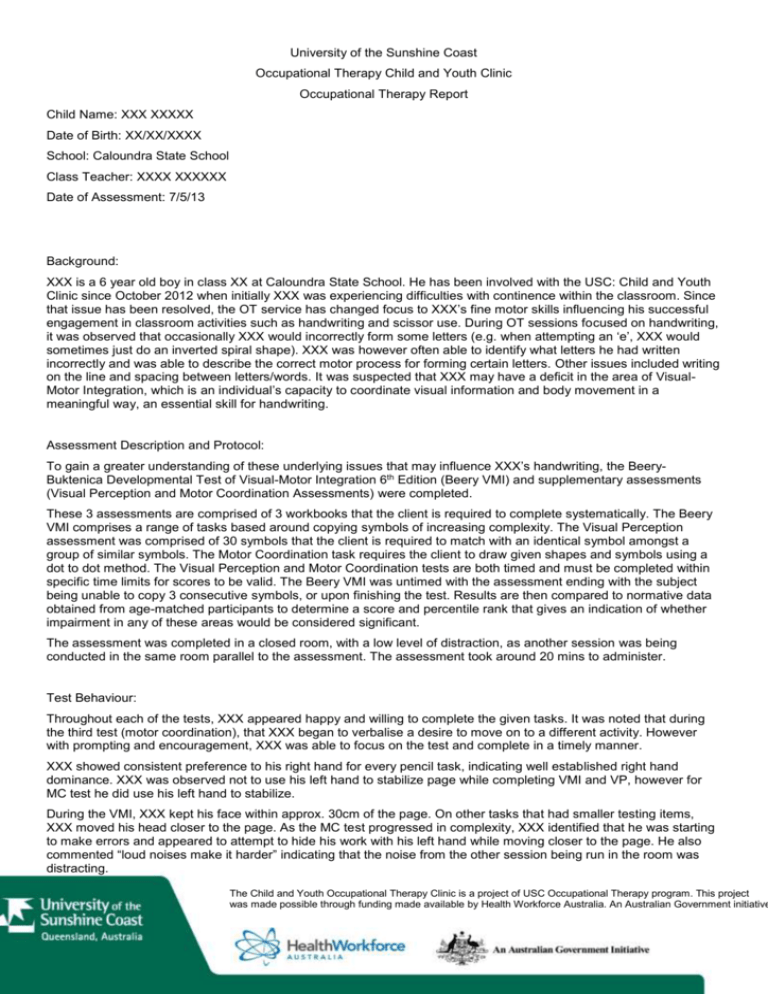
University of the Sunshine Coast Occupational Therapy Child and Youth Clinic Occupational Therapy Report Child Name: XXX XXXXX Date of Birth: XX/XX/XXXX School: Caloundra State School Class Teacher: XXXX XXXXXX Date of Assessment: 7/5/13 Background: XXX is a 6 year old boy in class XX at Caloundra State School. He has been involved with the USC: Child and Youth Clinic since October 2012 when initially XXX was experiencing difficulties with continence within the classroom. Since that issue has been resolved, the OT service has changed focus to XXX’s fine motor skills influencing his successful engagement in classroom activities such as handwriting and scissor use. During OT sessions focused on handwriting, it was observed that occasionally XXX would incorrectly form some letters (e.g. when attempting an ‘e’, XXX would sometimes just do an inverted spiral shape). XXX was however often able to identify what letters he had written incorrectly and was able to describe the correct motor process for forming certain letters. Other issues included writing on the line and spacing between letters/words. It was suspected that XXX may have a deficit in the area of VisualMotor Integration, which is an individual’s capacity to coordinate visual information and body movement in a meaningful way, an essential skill for handwriting. Assessment Description and Protocol: To gain a greater understanding of these underlying issues that may influence XXX’s handwriting, the BeeryBuktenica Developmental Test of Visual-Motor Integration 6th Edition (Beery VMI) and supplementary assessments (Visual Perception and Motor Coordination Assessments) were completed. These 3 assessments are comprised of 3 workbooks that the client is required to complete systematically. The Beery VMI comprises a range of tasks based around copying symbols of increasing complexity. The Visual Perception assessment was comprised of 30 symbols that the client is required to match with an identical symbol amongst a group of similar symbols. The Motor Coordination task requires the client to draw given shapes and symbols using a dot to dot method. The Visual Perception and Motor Coordination tests are both timed and must be completed within specific time limits for scores to be valid. The Beery VMI was untimed with the assessment ending with the subject being unable to copy 3 consecutive symbols, or upon finishing the test. Results are then compared to normative data obtained from age-matched participants to determine a score and percentile rank that gives an indication of whether impairment in any of these areas would be considered significant. The assessment was completed in a closed room, with a low level of distraction, as another session was being conducted in the same room parallel to the assessment. The assessment took around 20 mins to administer. Test Behaviour: Throughout each of the tests, XXX appeared happy and willing to complete the given tasks. It was noted that during the third test (motor coordination), that XXX began to verbalise a desire to move on to a different activity. However with prompting and encouragement, XXX was able to focus on the test and complete in a timely manner. XXX showed consistent preference to his right hand for every pencil task, indicating well established right hand dominance. XXX was observed not to use his left hand to stabilize page while completing VMI and VP, however for MC test he did use his left hand to stabilize. During the VMI, XXX kept his face within approx. 30cm of the page. On other tasks that had smaller testing items, XXX moved his head closer to the page. As the MC test progressed in complexity, XXX identified that he was starting to make errors and appeared to attempt to hide his work with his left hand while moving closer to the page. He also commented “loud noises make it harder” indicating that the noise from the other session being run in the room was distracting. The Child and Youth Occupational Therapy Clinic is a project of USC Occupational Therapy program. This project was made possible through funding made available by Health Workforce Australia. An Australian Government initiative Result Summary: Scores below are the final results obtained from all three assessments. They indicate the following: - Raw score is an indication of the total number of correct responses on each test. Standard scores are a conversion of the raw score to provide a comparative score for the purpose of interpretation. A standard score between 90-119 range is average. Scaled scores are similar to a standard score as they are a means of comparison to assist with interpretation of the results. Percentile rank is a score indicating the rank of the participants in relation to age–matched peers. Percentile rank is found using standard and scaled scores (For example; a rank of 65th percentile indicates that the participant scored better than 65% of their age-matched peers, and worse than 35%.) Beery VMI Visual Perception Motor Coordination Raw Scores 18 23 18 Standard Scores 106 120 102 Scaled Scores 11 14 10 65% 91% 55% Percentiles Discussion and Analysis: The percentiles obtained from these 3 assessments indicate that XXX’s performance in each indicate at least an average level of functioning, with the Beery VMI being slightly above average and Visual Perception being significantly above average. These results indicate that XXX’s challenges in handwriting, including letter formation/orientation, word spacing and line awareness are not a result of his visual-motor integration, visual perception or motor coordination skills. These results, coupled with observations of XXX within OT sessions leads to the assumption that difficulties in this area are likely due to poor motor patterns that have been habituated over time, his attention to the task at hand, and occasional inadequate stabilisation of the page. If this is case, simple and constant repetition, specific feedback and guided cognitive orientation to his performance with handwriting may be sufficient to enable XXX to form more accurate motor patterns and increase his handwriting legibility. Conclusion: XXX’s handwriting difficulties are not a result of challenges in visual-motor integration, visual perception or motor coordination skills, as XXX is currently performing at least at an average level in each of these areas, with his visual perception skills being significantly above average. These results, coupled with observations from OT session supports the assumption that challenges in letter formation, word spacing, line awareness are the result of inadequate habituated motor patterns that have formed over time, his attention toward his own handwriting performance, and stability of the page in front of him. Recommendations: - - Continue one-on-one OT sessions weekly. When handwriting, XXX would benefit from one-on-one support, focusing on giving specific feedback and grading this support down to prompting him to self-identify errors. Also for helping him to maintain his attention to aspects of handwriting that have been identified as problem areas, the use of a teacher aide session regularly would be useful. Some ideas that would be beneficial are as follows: o Guided tracing of upper and lower case letters. Emphasis placed on each aspect of letter formation (e.g. “make a ball and then a stick”). o Letter formation free practice not only pen to paper but in other fun tasks (e.g. on whiteboard, in shaving foam, with play dough, etc.) o Praise successful letter formation, and writing on the line. o Use more general prompts and questions to encourage XXX to reflect and identify his own errors. (e.g. “Does yours look like mine?”, “I wonder how you could change this to look more like this one.”) o Be persistent and encourage perfect completion of task and then emphasise success with increased praise. The Child and Youth Occupational Therapy Clinic is a project of USC Occupational Therapy program. This project was made possible through funding made available by Health Workforce Australia. An Australian Government initiative



